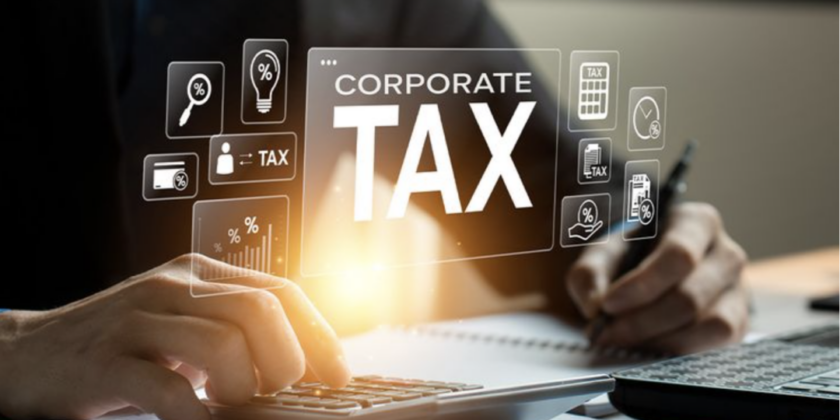INTEREST RATES: NO MORE ROOM FOR TIGHTENING

Despite interest rates in Pakistan being almost at historic highs, the country is still experiencing negative real rates for both current and future inflation. While some argue that keeping interest rates in positive territory is necessary to control inflation, others believe that rising interest rates may not be effective in curbing cost-push inflation.
Let’s assess whether increasing interest rates further would effectively control inflation and have merit. Lowering the pressure of borrowing is one of the main reasons for raising interest rates, along with providing real returns for savers that are adjusted for inflation. I aim to analyze both perspectives and assess the effectiveness of tightening monetary policy.
The government of Pakistan is the dominant borrower, which is a positive aspect. To be precise, three-fourths (76 percent) of total banking deposits and exactly half (48 percent) of the banking assets are borrowed by the government from commercial banks. The government borrowing represents 72 percent of the share in broad money (M2) stock, while public sector entities receive 6 percent.
Whether the change in interest rates can impact the government’s spending behavior is the question. Historically, including more recent times, it has been suggested that government borrowing and spending are largely insulated from interest rates. Conventional monetary tightening’s efficacy in controlling overall credit behavior and money creation was seriously limited.
The private sector accounts for 32 percent of the broad money and 28 percent of the net domestic assets (NDA) held by banks. Concessionary finance accounts for 15 percent within private credit. Rs9.2 trillion worth of private credit has been disbursed, including Rs1.6 trillion in concessionary finance through schemes such as TERF, ERF, LTTF, and others, with liquidity provided by the State Bank of Pakistan and risk assumed by banks and other financial institutions.
Compared to both developed and other developing economies, Pakistan has a much lower share of private credit. In the US, domestic private credit to GDP is over 200 percent and in many other developed countries it is over 100 percent, while in India it is over 50 percent and approaching 50 percent in Bangladesh. Private credit to GDP in Pakistan is under 20 percent, whereas its peak was 27 percent in 2007.
In Pakistan, almost two-thirds of the total private credit pie is skewed towards manufacturing composition. Due to import restrictions and overall demand destruction, LSM growth has already taken a nosedive. Due to the increasing finance cost, some players may default on repayment as they sell assets to pay off bank loans.
Consumer finance only accounts for 10 percent of private credit, 3 percent of broad money, and an even smaller share of total domestic credit. This fiscal year, it’s already down by 3 percent, and there isn’t much space left for further decline.
The growth of broad money supply has reached 15 percent this fiscal year. However, the recorded inflation number of 36 percent indicates that real money growth is significantly negative. This reflects a sharp decline in the real money supply.
There isn’t much to curtail by further increasing the rates, and that’s the story of the credit. From Pakistan’s perspective, curbing the current account deficit is another way to approach the situation. Despite lifting import restrictions, the surplus remains, indicating that the balance is likely to remain under control.
Looking at the composition of the inflation basket provides an alternative perspective on how curbing demand can affect inflation efficacy. Food items make up over 30 percent of urban baskets and 40 percent of rural baskets. The government exercises control over prices in the food value chain in many ways. Provincial governments set the support price for both wheat and sugar, for example.
Attempts are made by district management to regulate the retail prices of various food items. Not much can be done to control food prices by raising interest rates, without debating the distortions created due to such practices.
Hawks argue that savers are at a disadvantage due to negative real rates. They are, indeed. While bank deposits are offering at best 20 percent, inflation is anticipated to be around 30 percent.
Nonetheless, a significant portion of the economy operates informally and remains outside the purview of the banking system. The fact that currency in circulation is extraordinarily high, accounting for 44 percent of bank deposits and 30 percent of broad money supply, is evident.
It is likely one of the highest in the world. Despite high interest rates and the depreciation of the Pak Rupee, the informality or weakness in the economy has been increasing in recent years (and quarters). Informal actors opt to stay outside the system for various reasons, primarily to avoid being taxed, and are not enticed by higher returns offered by bank deposits or other formal savings options that are linked to interest rates.
Financial exclusion affects the poor, with only around 67 million bank accounts for a population of approximately 230 million. Due to religious reasons, many individuals with bank accounts are unable to access conventional interest-bearing deposits.



